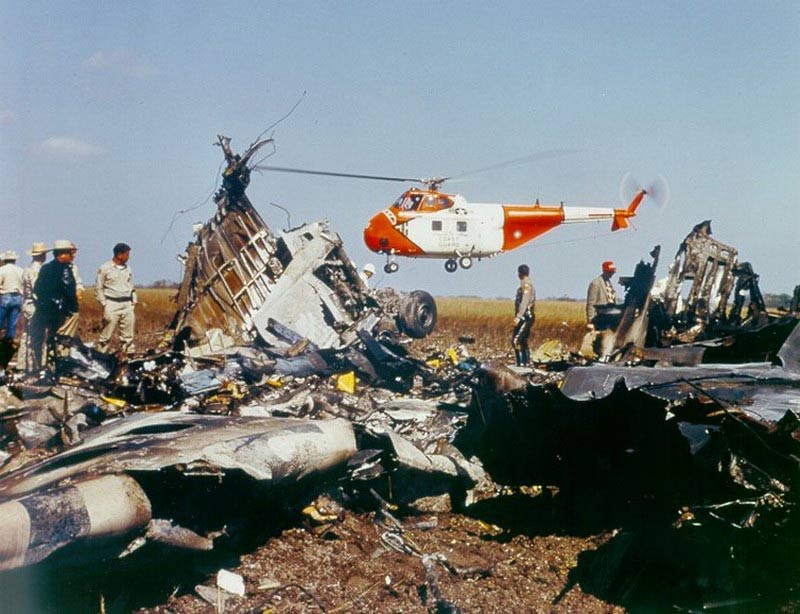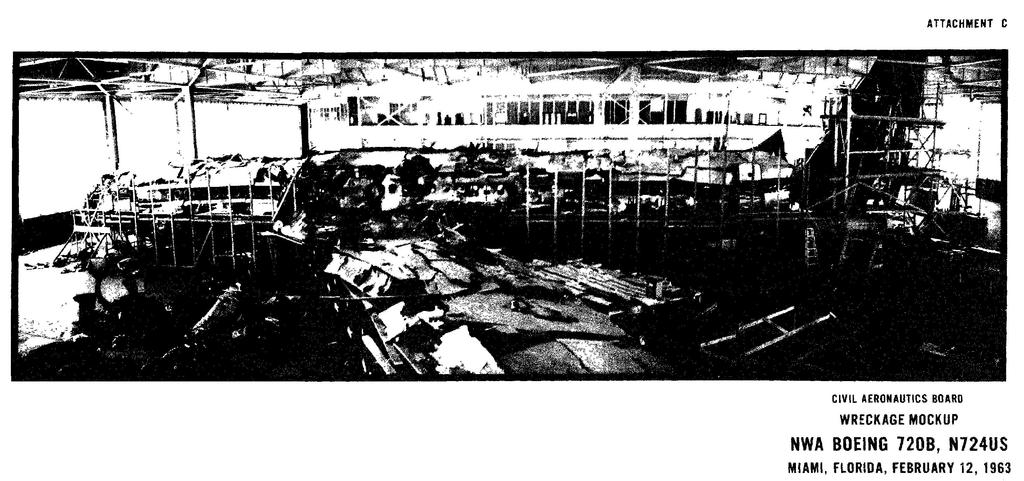Country
Operator Image

Crash of a Douglas DC-9-14 in Detroit: 8 killed
Date & Time:
Dec 3, 1990 at 1345 LT
Registration:
N3313L
Survivors:
Yes
Schedule:
Detroit - Pittsburgh
MSN:
45708
YOM:
1966
Flight number:
NW1482
Crew on board:
4
Crew fatalities:
Pax on board:
40
Pax fatalities:
Other fatalities:
Total fatalities:
8
Captain / Total hours on type:
4000.00
Aircraft flight hours:
62253
Circumstances:
On December 3, 1990, at 1345 est, Northwest flight 1482, a DC-9 (N3313L), and Northwest flight 299, a Boeing 727 (N278US), collided near the intersection of runway 09/27 and 03C/21C in dense fog at Detriot-Metropolitan-Wayne County Airport, MI. At the time of the collision, the B-727 was on its takeoff roll, and the DC-9 had just taxied onto the active runway. The B-727 was substantially damaged, and the DC-9 was destroyed. Seven of the 40 passengers and 1 crew member aboard the DC-9 received fatal injuries. None of the 146 passengers and 8 crewmembers aboard the B-727 were injured.
Probable cause:
Lack of proper crew coordination, including virtual reversal of roles by the DC-9 pilots, which led to their failure to stop taxiing and alert ground controller of their positional uncertainty in a timely manner before and after intruding onto the active runway. Contributing to cause of accident were:
- Deficiencies in ATC services provided by Detroit tower, including failure of ground control to take timely action to alert local controller to possible runway incursion, inadequate visibility observation, failure to use progressive taxi instructions low-visibility conditions, and issuance of inappropriate and confusing taxi instructions compounded by inadequate backup supervision for level of experience of staff on duty;
- Deficiencies in surface markings, signage and lighting at airport and failure of FAA surveillance to detect or correct any of these deficiencies;
- Failure of Northwest Airlines to provide adequate cockpit resource management training to line aircrews. Contributing to fatalities was inoperability of DC-9 internal tailcone release mechanism. Contributing to number and severity of injuries was failure of crew of DC-9 to properly execute the passenger evacuation.
- Deficiencies in ATC services provided by Detroit tower, including failure of ground control to take timely action to alert local controller to possible runway incursion, inadequate visibility observation, failure to use progressive taxi instructions low-visibility conditions, and issuance of inappropriate and confusing taxi instructions compounded by inadequate backup supervision for level of experience of staff on duty;
- Deficiencies in surface markings, signage and lighting at airport and failure of FAA surveillance to detect or correct any of these deficiencies;
- Failure of Northwest Airlines to provide adequate cockpit resource management training to line aircrews. Contributing to fatalities was inoperability of DC-9 internal tailcone release mechanism. Contributing to number and severity of injuries was failure of crew of DC-9 to properly execute the passenger evacuation.
Final Report:
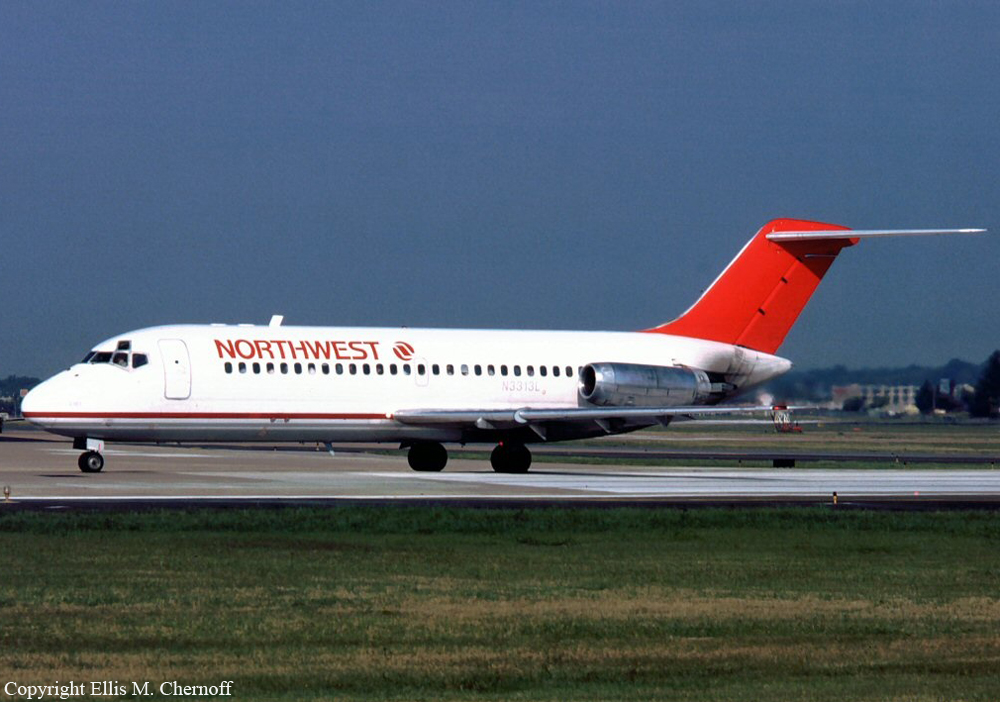
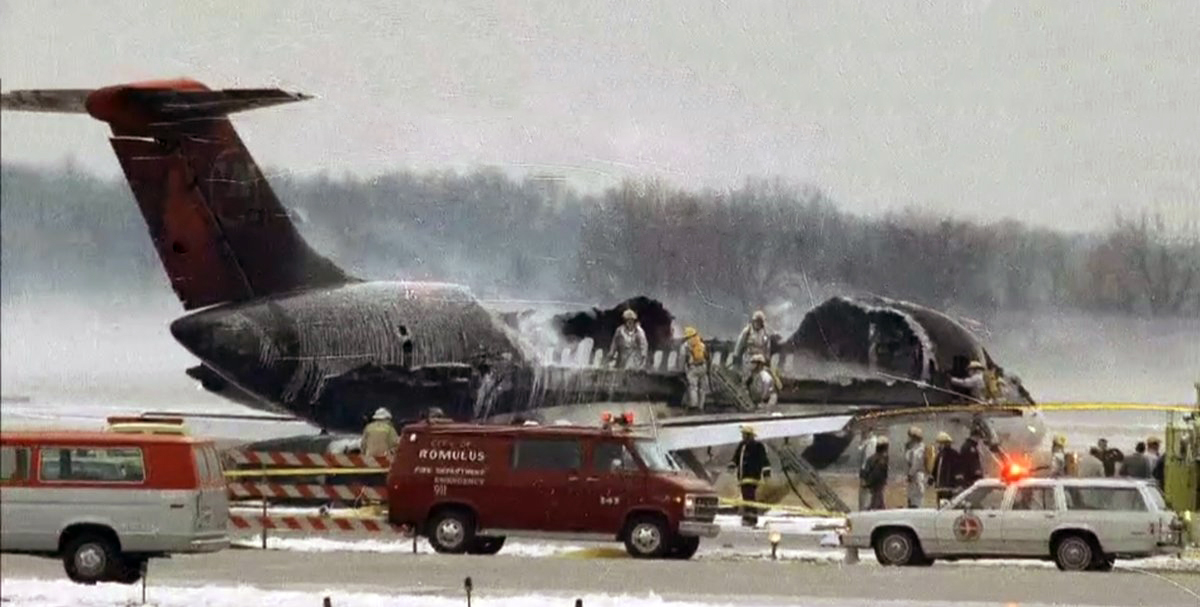
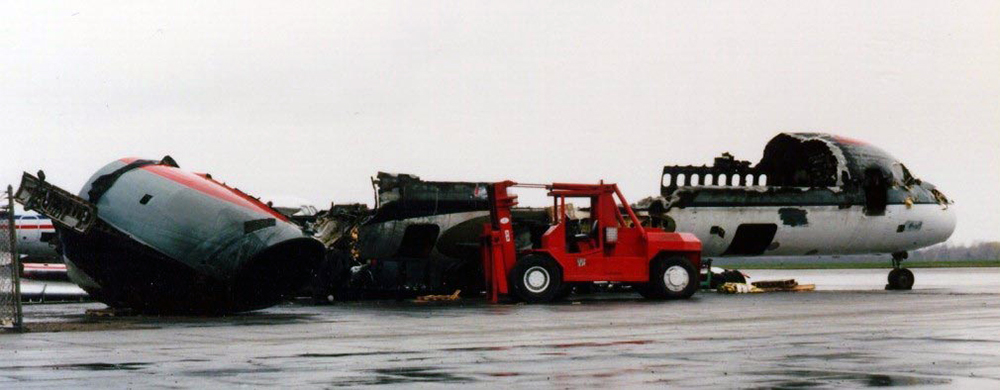
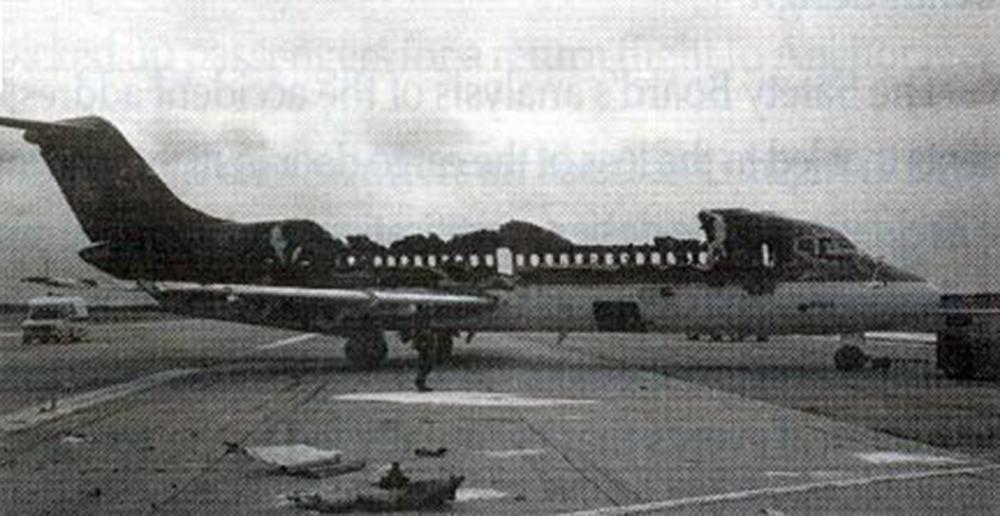
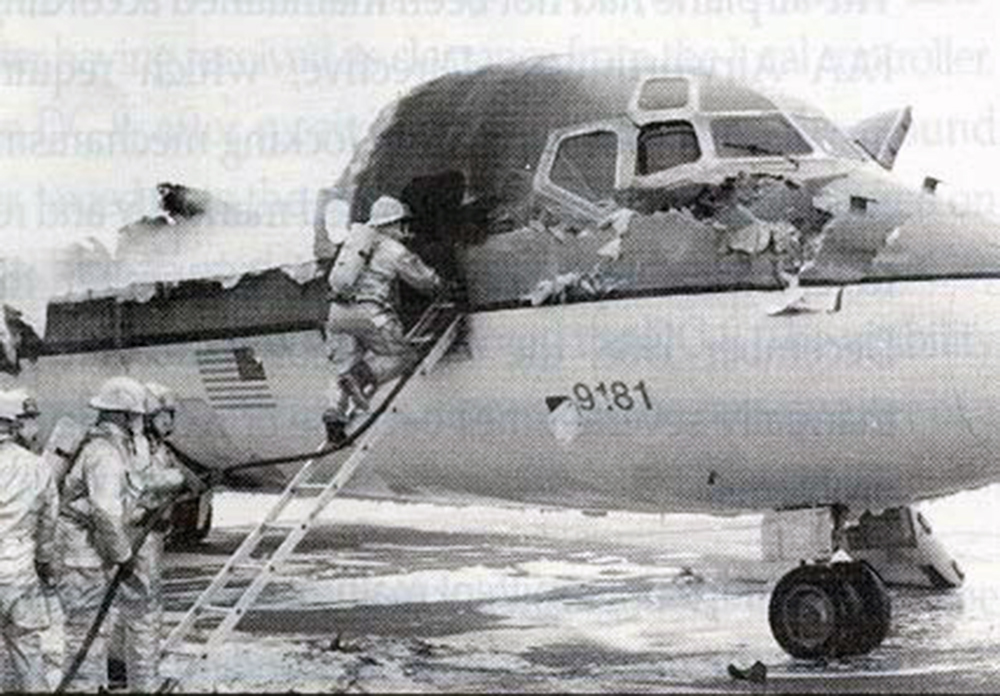
Crash of a McDonnell Douglas MD-82 in Detroit: 156 killed
Date & Time:
Aug 16, 1987 at 2045 LT
Registration:
N312RC
Survivors:
Yes
Schedule:
Saginaw - Detroit - Phoenix - Santa Ana
MSN:
48090
YOM:
1981
Flight number:
NW255
Crew on board:
6
Crew fatalities:
Pax on board:
149
Pax fatalities:
Other fatalities:
Total fatalities:
156
Captain / Total hours on type:
1359.00
Copilot / Total hours on type:
1604
Aircraft flight hours:
14928
Circumstances:
A McDonnell Douglas DC-9-82 operating Northwest Airlines flight 255 was destroyed when it crashed onto a road during takeoff from Detroit-Metropolitan Wayne County Airport, Michigan, USA. Just one of the 155 occupants survived the accident. Additionally, Two persons on the ground were killed. Flight NW255 was a regularly scheduled passenger flight between Saginaw, Michigan and Santa Ana, California, with en route stops at Detroit and Phoenix, Arizona. About 18:53, flight 255 departed Saginaw and about 19:42 arrived at its gate at Detroit. About 20:32, flight 255 departed the gate with 149 passengers and 6 crewmembers on board. During the pushback, the flightcrew accomplished the BEFORE (engine) START portion of the airplane checklist, and, at 20:33, they began starting the engines. The flight was then cleared to "taxi via the ramp, hold short of (taxiway) delta and expect runway three center [3C] (for takeoff)..." The ground controller amended the clearance, stating that the flight had to exit the ramp at taxiway Charlie. The crew was requested to change radio frequencies. The first officer repeated the taxi clearance, but he did not repeat the new radio frequency nor did he tune the radio to the new frequency. At 20:37, the captain asked the first officer if they could use runway 3C for takeoff as they had initially expected 21L or 21R. After consulting the Runway Takeoff Weight Chart Manual, the first officer told the captain runway 3C could be used for takeoff. During the taxi out, the captain missed the turnoff at taxiway C. When the first officer contacted ground control, the ground controller redirected them to taxi to runway 3C and again requested that they change radio frequencies. The first officer repeated the new frequency, changed over, and contacted the east ground controller. The east ground controller gave the flight a new taxi route to runway 3C, told them that windshear alerts were in effect, and that the altimeter setting was 29.85 inHg. The flightcrew acknowledged receipt of the information. At 20:42, the local controller cleared flight 255 to taxi into position on runway 3C and to hold. He told the flight there would be a 3-minute delay in order to get the required "in-trail separation behind traffic just departing." At 20:44:04, flight 255 was cleared for takeoff. Engine power began increasing at 20:44:21. The flightcrew could not engage the autothrottle system at first, but, at 20:44:38, they did engage the system, and the first officer called 100 knots at 20:44:45. At 20:44:57, the first officer called "Rotate." Eight seconds later, the stall warning stick shaker activated, accompanied by voice warnings of the supplemental stall recognition system (SSRS). The takeoff warning system indicating that the airplane was not configured properly for takeoff, did not sound at any time prior or during takeoff. After flight 255 became airborne it began rolling to the left and right before the left wing hit a light pole in a rental car lot. After impacting the light pole, flight 255 continued to roll to the left, continued across the car lot, struck a light pole in a second rental car lot, and struck the side wall of the roof of the auto rental facility in the second rental car lot. The airplane continued rolling to the left when it impacted the ground on a road outside the airport boundary. The airplane continued to slide along the road, struck a railroad embankment, and disintegrated as it slid along the ground. Fires erupted in airplane components scattered along the wreckage path. Three occupied vehicles on the road and numerous vacant vehicles in the auto rental parking lot along the airplane's path were destroyed by impact forces and or fire. One passenger, a 4-year-old child was injured seriously.
Probable cause:
The flight crew's failure to use the taxi checklist to ensure that the flaps and slats were extended for take-off. Contributing the accident was the absence of electrical power to the airplane take-off warning system which thus did not warn the flight crew that the airplane was not configured properly for take-off. The reason for the absence of electrical power could not be determined.
Final Report:


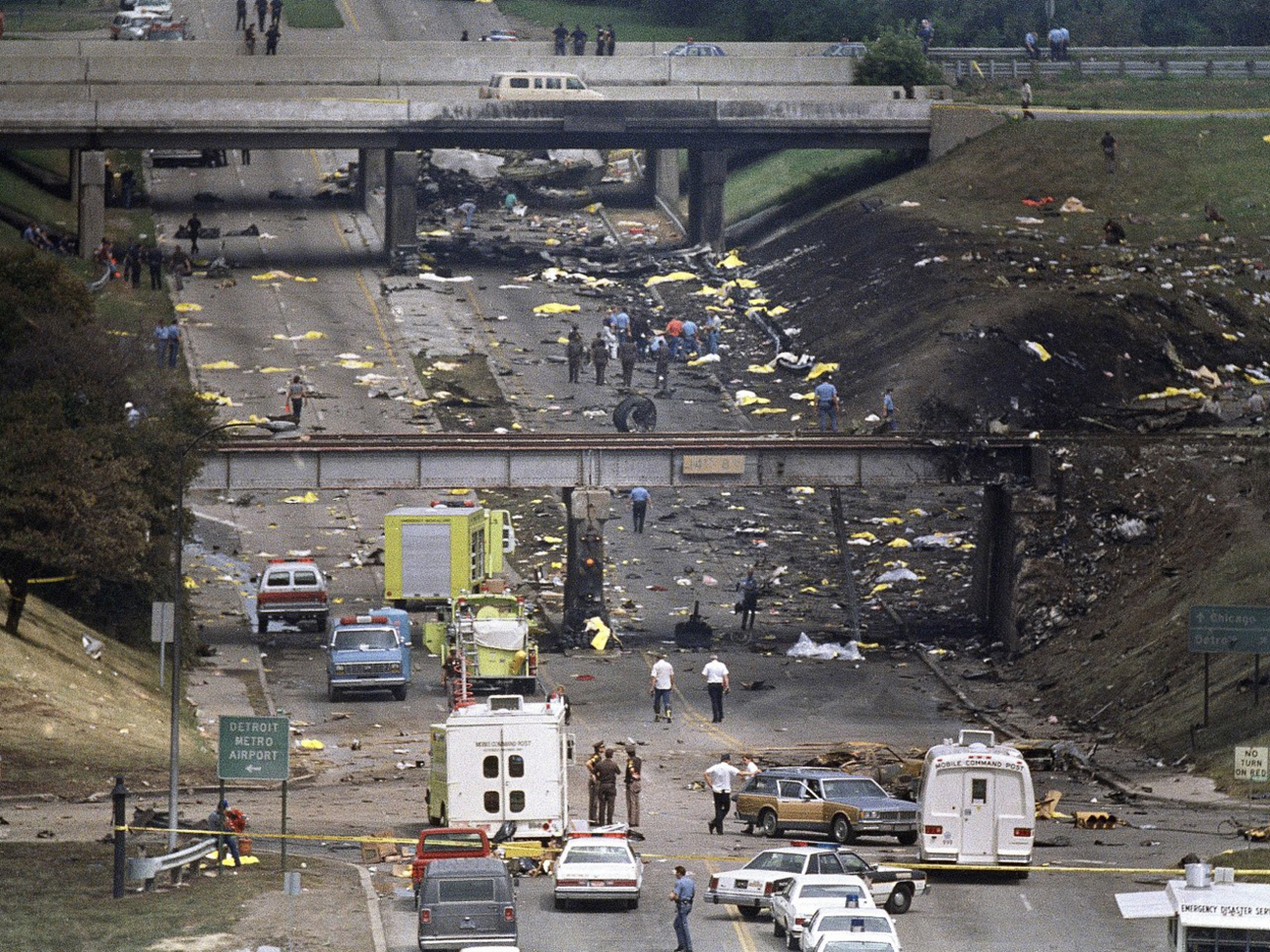
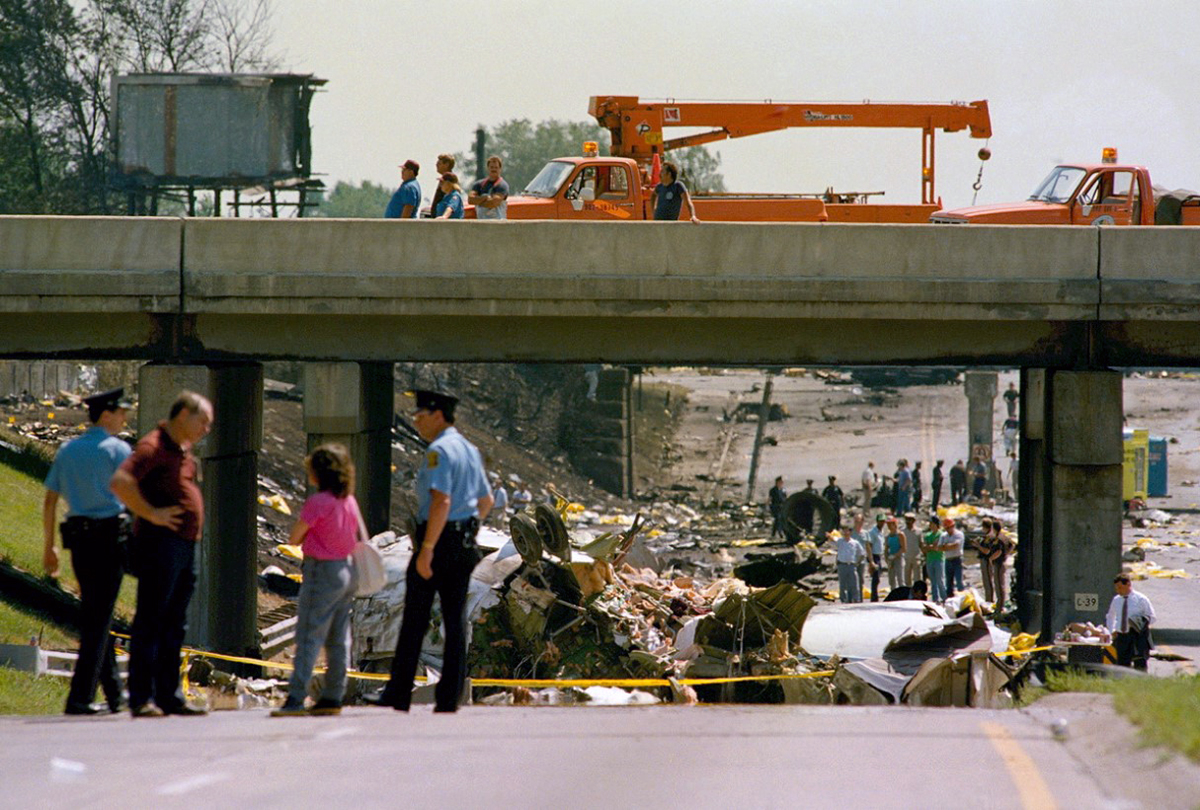
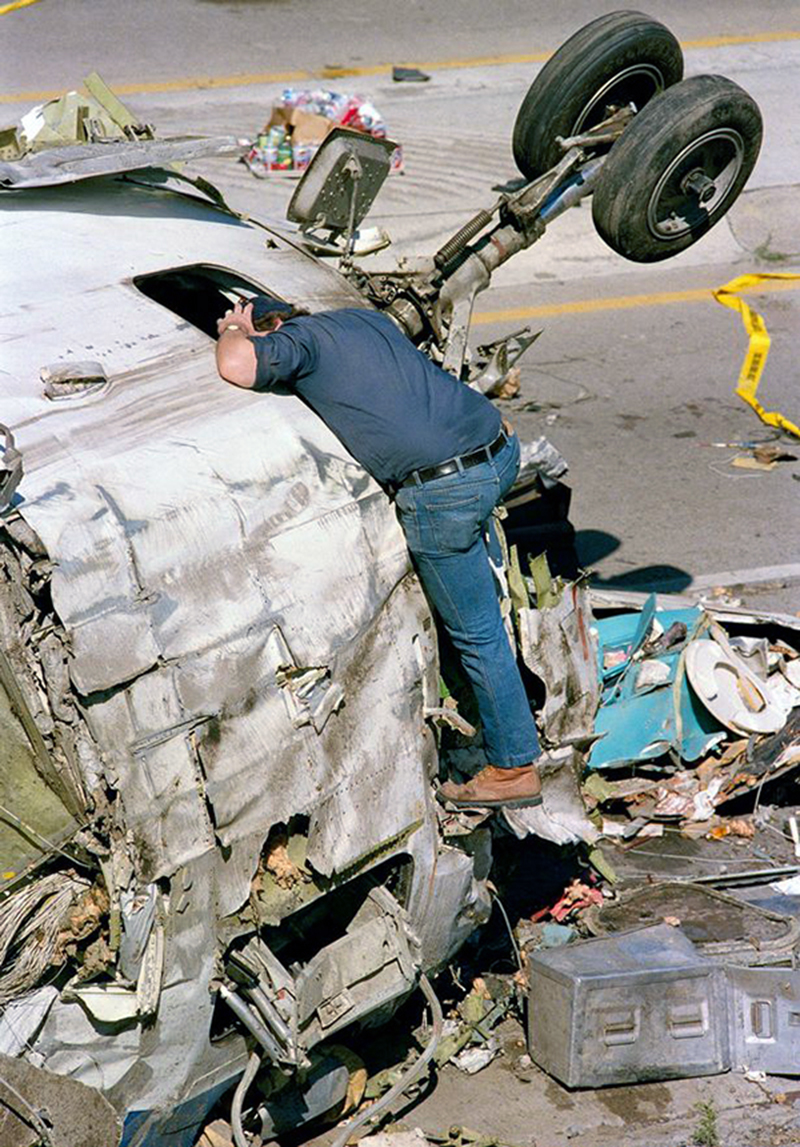
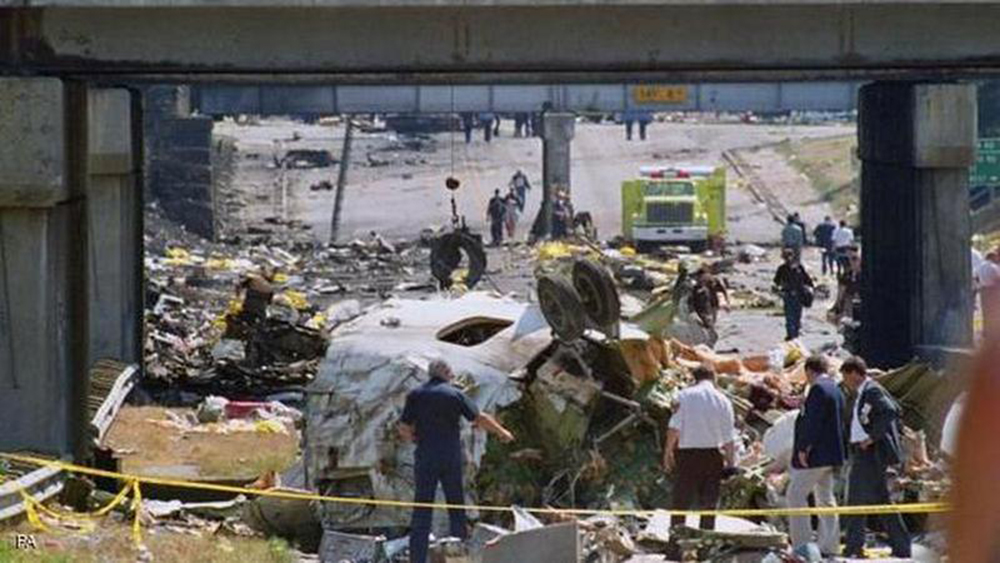

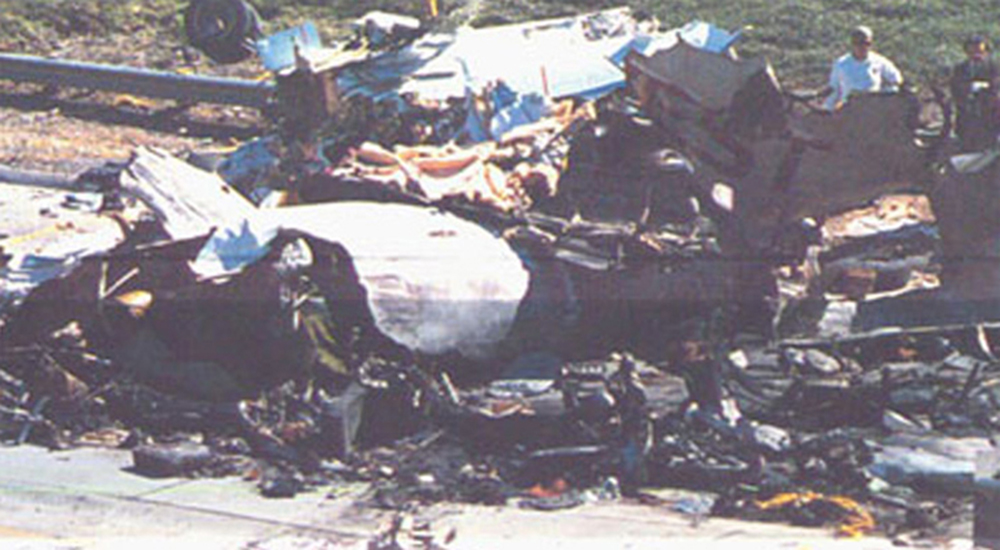

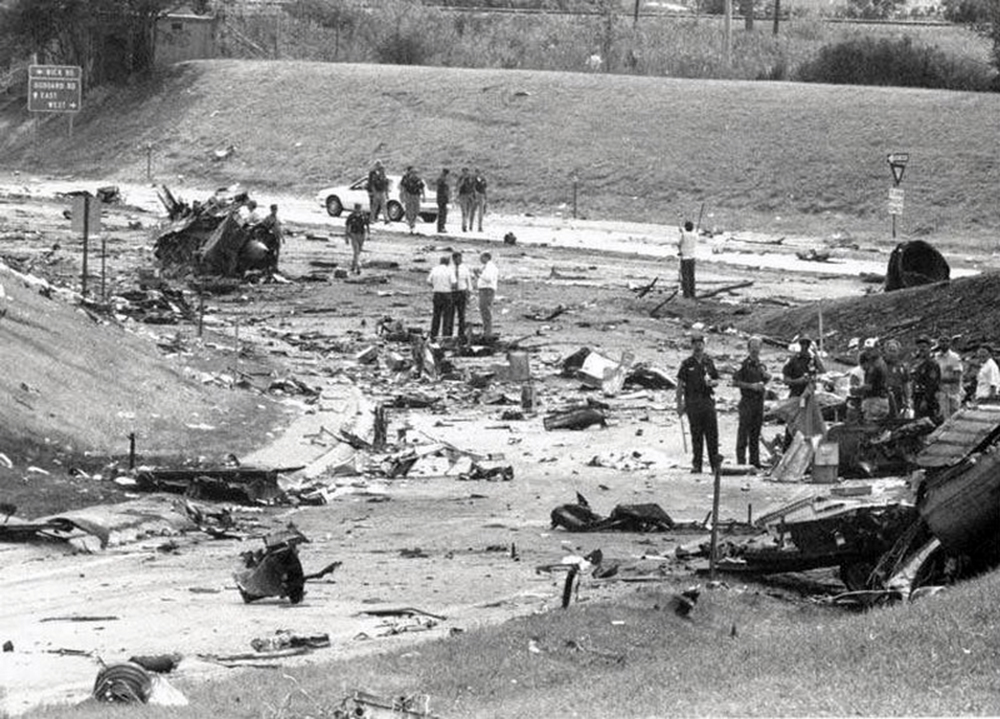
Crash of a Boeing 727-251 near Thiells: 3 killed
Date & Time:
Dec 1, 1974 at 1926 LT
Registration:
N274US
Survivors:
No
Schedule:
New York - Buffalo
MSN:
20296/777
YOM:
1969
Flight number:
NW6231
Crew on board:
3
Crew fatalities:
Pax on board:
0
Pax fatalities:
Other fatalities:
Total fatalities:
3
Captain / Total hours on type:
1973.00
Copilot / Total hours on type:
1611
Aircraft flight hours:
10289
Circumstances:
Flight NW6231 departed New York-JFK at 19:14 for a ferry flight to Buffalo and was cleared by departure control to climb to FL140. At 19:21 the flight was cleared to climb to FL310. The aircraft began to climb 2,500 fpm at an airspeed of 305 knots. As the aircraft climbed through FL160, both the airspeed and the rate of climb began to increase. Reaching FL230, the airspeed had reached 405 knots and the rate of climb had exceeded 6,500 fpm. The overspeed warning horn sounded a little later, followed 10 seconds later by a stick shaker stall warning. The aircraft then leveled at 24800 feet with a speed of 420 knots until it turned rapidly to the right, 13 seconds later. The airplane started to descend out of control, reaching a vertical acceleration of +5g until it struck the ground in a slightly nose down and right wing-down attitude. The aircraft had descended from 24000 feet to 1090 feet in 83 seconds.
Probable cause:
The loss of control of the aircraft because the flight crew failed to recognize and correct the aircraft's high-angle-of-attack, low-speed stall and its descending spiral. The stall was precipitated by the flight crew's improper reaction to erroneous airspeed and Mach indications which had resulted from a blockage of the pitot heads by atmospheric icing. Contrary to standard operational procedures, the flight crew had not activated the pitot head heaters.
Final Report:
Crash of a Douglas DC-7CF into the Pacific Ocean: 101 killed
Date & Time:
Jun 3, 1963 at 1016 LT
Registration:
N290
Survivors:
No
Schedule:
McChord – Elmendorf
MSN:
45209
YOM:
1957
Flight number:
NW293
Crew on board:
6
Crew fatalities:
Pax on board:
95
Pax fatalities:
Other fatalities:
Total fatalities:
101
Captain / Total hours on type:
3665.00
Copilot / Total hours on type:
635
Aircraft flight hours:
17418
Circumstances:
A Northwest Airlines, Inc., Douglas DC-7C, N290 MATS charter Flight 293, crashed in the north Pacific Ocean approximately 116 nautical miles west-southwest of Annette Island, Alaska, at approximately 1816 G.m.t., June 3, 1963. The flight departed McChord AFB, Washington, for Elmendorf AFB, Alaska, carrying 95 passengers and a crew of 6. The passenger list included military personnel, dependents, Department of Defense employees and a Red Cross employee. All occupants of the aircraft were lost at sea and the aircraft was destroyed. The aircraft had been airborne approximately 2 hours and 35 minutes when radio contact was lost. No difficulties were reported by the crew prior to this time. The wreckage was sighted by a Royal Canadian Air Force aircraft at 0322 C.m.t., June 4, 1963, at 54 degrees 21' N - 134 degrees 39' W but no survivors were observed. Approximately 1,500 pounds of floating aircraft wreckage was recovered.
Probable cause:
Because of a lack of evidence the Board is unable to determine the probable cause of this accident.
Final Report:
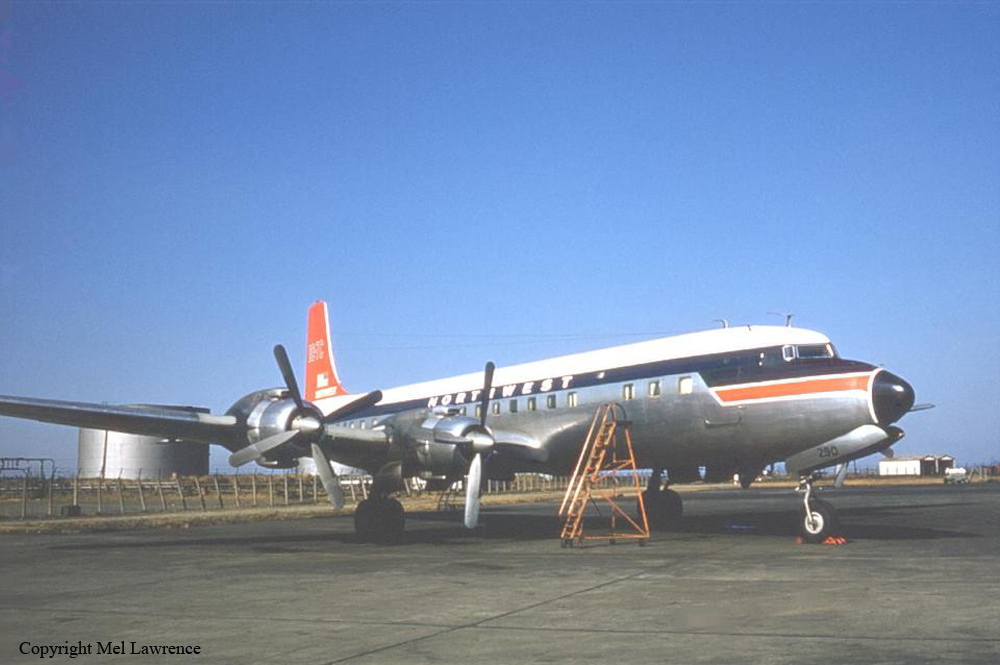
Crash of a Boeing 720-051B in the Everglades National Park: 43 killed
Date & Time:
Feb 12, 1963 at 1350 LT
Registration:
N724US
Survivors:
No
Schedule:
Miami – Chicago – Spokane – Seattle – Portland
MSN:
18354
YOM:
1961
Flight number:
NW705
Crew on board:
8
Crew fatalities:
Pax on board:
35
Pax fatalities:
Other fatalities:
Total fatalities:
43
Captain / Total hours on type:
150.00
Copilot / Total hours on type:
1093
Aircraft flight hours:
4684
Circumstances:
The aircraft arrived in Miami at 1240, following a routine flight from Chicago, Illinois The captain of the inbound flight reported that the only mechanical discrepancy was, "the outflow valves being a little sticky merely made it a little difficult to maintain the pressurization in a smooth manner. "These valves were cleaned, and a leaking rivet at the No. 4 reserve fuel tank was plugged when it was noticed by the mechanic. This was the only maintenance performed during the "turnaround". Flight 705 is regularly scheduled from Miami. to Portland, Oregon, with intermediate stops at Chicago, Illinois and Spokane and Seattle, Washington. The computed takeoff gross weight of 175,784 pounds, and center of gravity (e.g.) of 25 percent mean aerodynamic chord (MAC) were both well within the allowable limits. Prior to departing the ramp at 1325, the crew asked the ground controller about the departure routes being utilized, and he replied that most flights were departing ". . either through a southwest climb or a southeast climb and then back over the top of it. . . "The flight departed Miami with an Instrument Flight Rules (IFR) clearance at 1335 In accordance with the pilot's request for a". . . southeast vector "a left turn was rude after takeoff from runway 27L and circuitous routing was utilized in conjunction with radar vectors from Miami Departure Control, to avoid *** of anticipated turbulence associated with thunderstorm activity (See Attachment A). A similar departure pattern had been previously flown by another flight Subsequently, while maintaining 5,000 feet and a heading of 300 degrees, Flight 705 requested clearance to climb to a higher altitude. Following a discussion between the flight and the Federal Aviation Agency (FAA) radar departure controller about the storm activity, and while clearance to climb was being coordinated with the Miami Air Route Traffic Control Center (ARTCC), the flight advised "Ah-h we're in the clear now. We can see it out ahead . . . looks pretty bad." At 1343, Flight 705 was cleared to climb to flight level 2/ 250 (FL250). They responded, "OK ahhh, we'll make a left turn about thirty degrees here and climb. . "The controller asked of 270 degree was their selected climbout heading, and they replied that this would take them". . . out in the open again". . Accordingly, clearance was granted. Following some discussion about the severity of the turbulence, which was described as moderate to heavy, the flight advised, "OK, you better run the rest of them off the other way then." At 1345 radar service was terminated and control of Flight 705 was transferred to Miami ARTCC. When the flight did not establish radio communication with ARTCC on the initial frequency, Departure Control provided a secondary frequency, and instructed the flight to turn to a heading of 360 degrees which was acknowledged. When Miami ARTCC requested position and altitude, the flight replied, "We're just out of seventeen five (17,500 feet) and standby on the DME one." This transmission ended at 1348, and was the last known communication with Flight 705 The voice transmissions emanating from the flight were made by the first officer. Witnesses in the area reported that a loud explosion had occurred in the air, and several felt a subsequent ground tremor. They also reported that heavy rain had been failing in the area. One witness, in company with five other persons, was seven miles south of the main wreckage site She heard the sound of an explosion which had no echo. When she looked in that direction she saw an orange ball of flame in the edge of a cloud. As she directed the attention of her companions toward this flame, it dropped straight down, becoming a streak, and disappeared behind trees. Shortly after the disappearance a second sound was heard. Statements were received from the crews of four other flights operating in the Miami area at the approximate time of the accident. The first, in a large jet which approached Miami from the west at 7,000 feet, reported the weather as ". . . in and out of broken clouds and light rain showers with light turbulence. Darker heavy shower activity was observed to the (south) of course. We observed no small cells on our radar scope. . only a broad rain area. . . "Another crew, in a four-engine aircraft, departed Miami at 1318, via a departure pattern similar to that which Flight 705 later followed. They described the worst turbulence as". medium to moderate . . . "from west of the airport to north of the Miami VORTAC .3/ They were maintaining 5,000 feet at the time. A third crew in a 720B was folding southeast of Miami at 13,000 feet. They observed numerous rain cells on radar in the Miami area and encountered light ice at this altitude. The fourth crew, also flying a large jet, taxied out shortly after Flight 705 but delayed takeoff for nearly an hour because of the weather. The weather in the Miami area at the time of the accident was characterized by a pre-frontal squall line approximately 250 miles in length, oriented on a northeast-southwest line immediately northwest of Miami (See Attachment A). The U. S. Weather Bureau (USWB) radar observation at Miami at 1344 indicated a broken area of thunderstorms associated with this line, with cells two to twenty miles in diameter, and tops of detectable moisture at 30,000 feet. The line was moving southeast at eight knots, and moderate rain showers were occurring at the station. The 0600 and 1800 Miami radiosonde ascents showed the freezing level to have been at 11,100 and 12,400 feet m.s.1., respectively. SIGMET 4/ No. 3 prepared by the USWB at Miami, valid from 0900-1300, forecast moderate to severe turbulence 5/ in thunderstorms, with a chance of extreme turbulence in heavier thunderstorms. This advisory was called to the attention of the crew of Flight 705 by the operations agent at Miami, and was attached to their dispatch papers. SIGMET No. 4, valid from 1300-1700, was not received until approximately 1315, after the crew of Flight 705 had left the operations office. It forecast moderate to severe turbulence, but deleted the reference to extreme turbulence indicated in SIGMET No 3. Since the dispatcher for this flight is stationed in Minneapolis, the physical Limitations involved made it difficult to apprise the crew of this latest advisory prior to their taxi time of 1325. The aircraft was completely destroyed by impact forces and all 43 occupants have been killed.
Probable cause:
The Board determines that the probable cause of this accident was toe unfavorable interaction of severe vertical air drafts and large longitudinal control displacements resulting in a longitudinal "upset" from which a successful recovered was not made.
Final Report:
